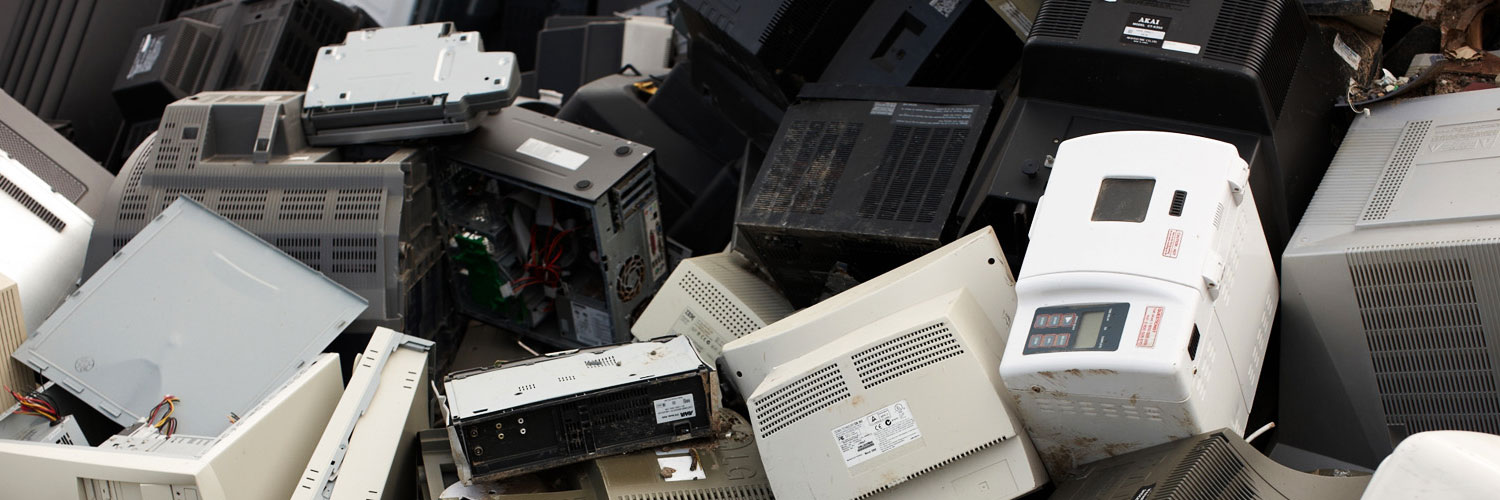How many people does it take to change our thinking about a broken lightbulb?

Along with the road-crossing chicken, the old joke about changing lightbulbs has sustained comedians for decades.
But there is also a serious side to the issue of electronic waste, which can include TV sets, phones and computers full of environmentally-unfriendly heavy metals and inorganic chemicals.
Visiting Fulbright scholar and anthropological archaeologist Gideon Singer is going beyond and behind the standard issues around what happens after electronics are deemed obsolete.
He is actually focusing on the social and political processes surrounding the making of e-waste, including what these reveal about humans, governance and the ecology.
His focus is on the town of Alice Springs, where he is spending 10 months conducting ethnographic interviews, surveys, observations and spatial analysis in a geographic information system, to illuminate the e-waste predicament’
Alice Springs not only offers a manageable project scale for contact with local NGOs but its remoteness from e-waste recycling and recovery facilities also make it a hub for regional waste management across central Australia.
Mr Singer will investigate local responses to the rapid increase of e-waste and design community-based resources to unmake that waste. He also plans to create educational resources and teach students how to use an online Story Mapping Template to visualise their own consumption and discard practices.
Currently a Fellow in Sustainable Electronics at Purdue University, Mr Singer is visiting Australia as a Fulbright Postgraduate Scholar, based at CQUniversity Adelaide’s Appleton Institute (when he’s not at Alice Springs).
On top of his core research project, he is working alongside CQUniversity researchers Associate Professor Kirrilly Thompson, Dr Keri Chiveralls and his Purdue Uni PhD advisor Dr Harold Cooper to co-edit a special ‘Waste, Space and Place’ issue of the journal Sustainability.
“As an anthropological archaeologist who has served on many archaeological digs around the USA, I investigate the dynamic relations between society and the artefacts we have designed, produced, consumed, and left behind,” he says.
“My goal is to become a global advocate for societal, economic, and ecological sustainability.
“My focus on e-waste is generated by growing demands for technology and of growing concern to the health of people and environments.”
You can find out more here about Electronic and Electrical Waste OR here about E-Waste.
For example, did you know?
* 75% of the 3 million computers bought in Australia every year will end up in landfill.
* In 2007/8, 16.8 million computers reached their end of life. Of this, only 9% will be recycled.
* By 2010, there will be 716 million new computers in use worldwide.
* Electronic waste is responsible for 70% of the toxic chemicals such as lead, cadmium and mercury found in landfill.
* E-waste is being sent to landfill at three times the rate of general waste.
* 17 million televisions were either in landfill or sent to landfill in 2008.
* The Excellence in Research Australia (ERA) 2015 report, managed by the Australian Research Council (ARC) shows that CQUniversity conducts research rated as “at”, “above” and “well above” world standard in 14 different research categories.
By Marc Barnbaum, CQUniversity
Originally published on CQUniNews
Copyright © 2021 – Fulbright


 Facebook
Facebook Twitter
Twitter Linkedin
Linkedin Instagram
Instagram